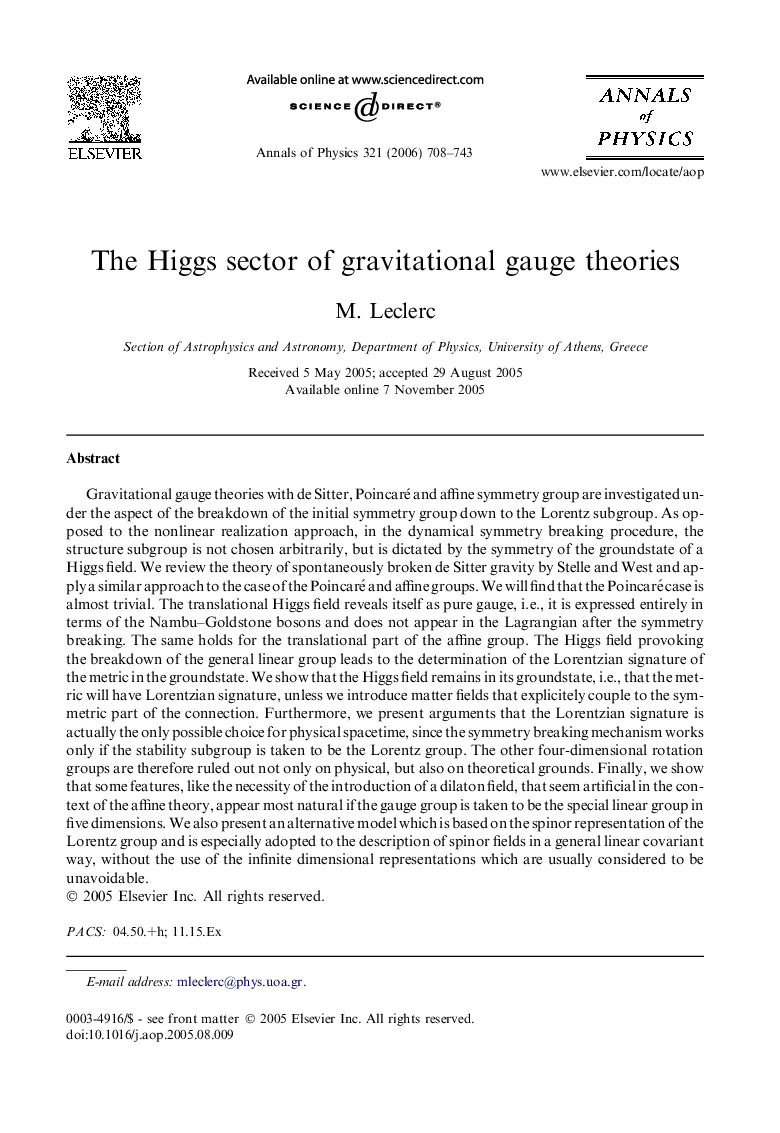| کد مقاله | کد نشریه | سال انتشار | مقاله انگلیسی | نسخه تمام متن |
|---|---|---|---|---|
| 1857823 | 1529965 | 2006 | 36 صفحه PDF | دانلود رایگان |

Gravitational gauge theories with de Sitter, Poincaré and affine symmetry group are investigated under the aspect of the breakdown of the initial symmetry group down to the Lorentz subgroup. As opposed to the nonlinear realization approach, in the dynamical symmetry breaking procedure, the structure subgroup is not chosen arbitrarily, but is dictated by the symmetry of the groundstate of a Higgs field. We review the theory of spontaneously broken de Sitter gravity by Stelle and West and apply a similar approach to the case of the Poincaré and affine groups. We will find that the Poincaré case is almost trivial. The translational Higgs field reveals itself as pure gauge, i.e., it is expressed entirely in terms of the Nambu–Goldstone bosons and does not appear in the Lagrangian after the symmetry breaking. The same holds for the translational part of the affine group. The Higgs field provoking the breakdown of the general linear group leads to the determination of the Lorentzian signature of the metric in the groundstate. We show that the Higgs field remains in its groundstate, i.e., that the metric will have Lorentzian signature, unless we introduce matter fields that explicitely couple to the symmetric part of the connection. Furthermore, we present arguments that the Lorentzian signature is actually the only possible choice for physical spacetime, since the symmetry breaking mechanism works only if the stability subgroup is taken to be the Lorentz group. The other four-dimensional rotation groups are therefore ruled out not only on physical, but also on theoretical grounds. Finally, we show that some features, like the necessity of the introduction of a dilaton field, that seem artificial in the context of the affine theory, appear most natural if the gauge group is taken to be the special linear group in five dimensions. We also present an alternative model which is based on the spinor representation of the Lorentz group and is especially adopted to the description of spinor fields in a general linear covariant way, without the use of the infinite dimensional representations which are usually considered to be unavoidable.
Journal: Annals of Physics - Volume 321, Issue 3, March 2006, Pages 708–743